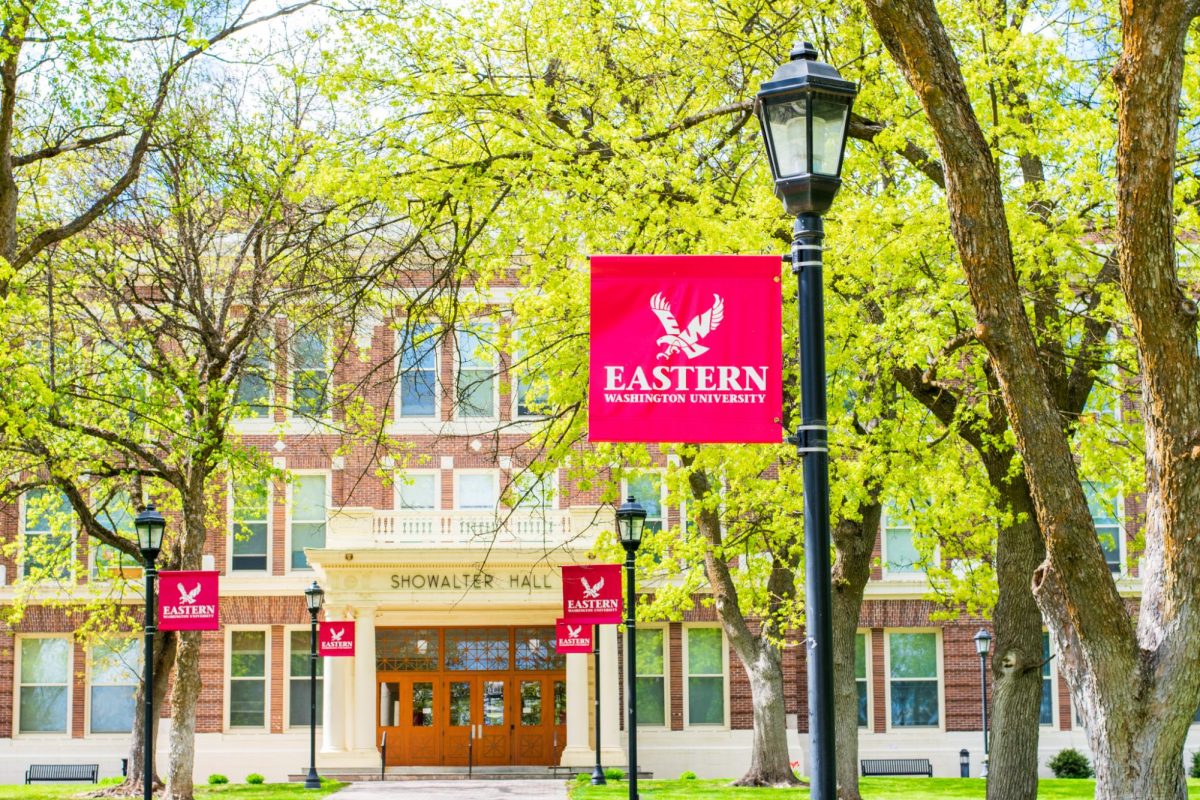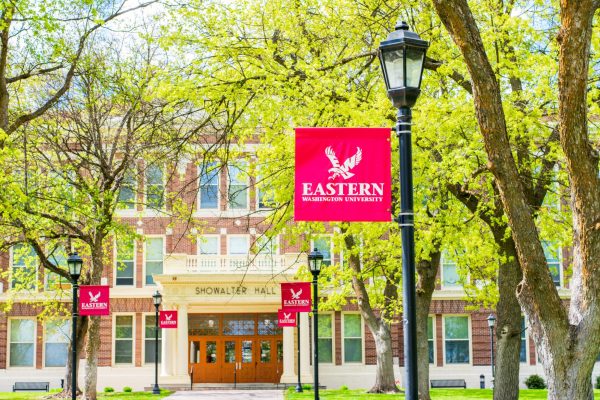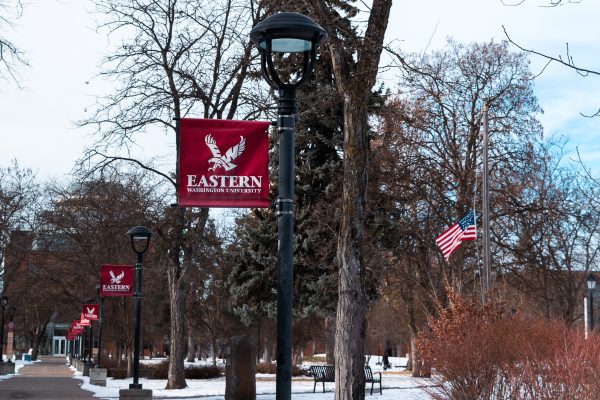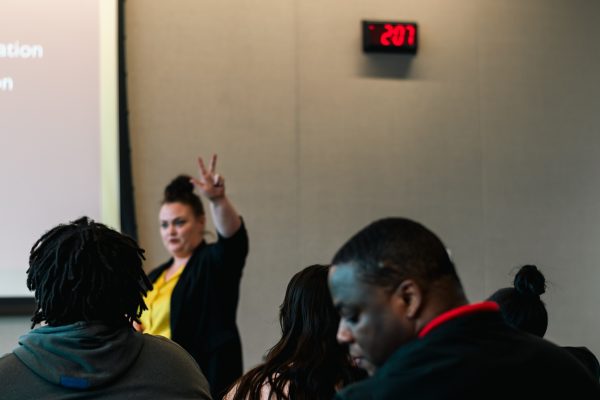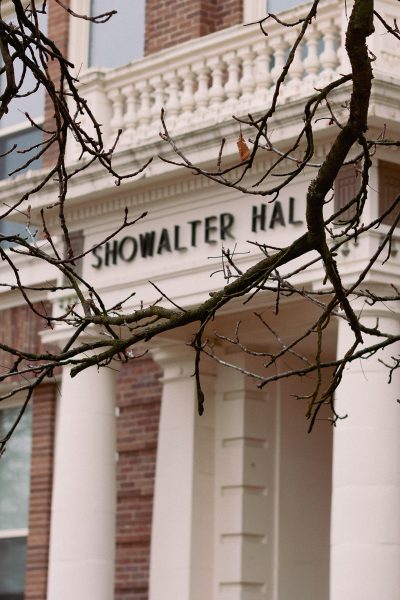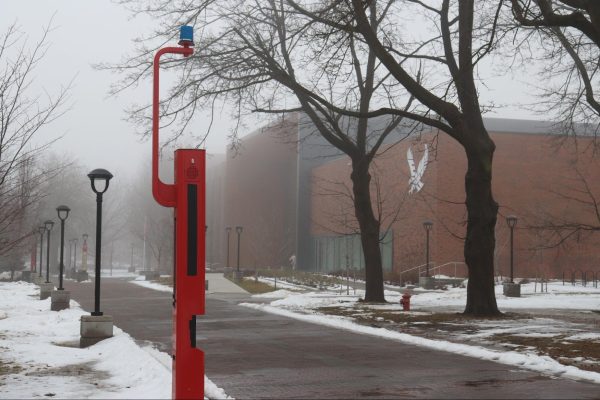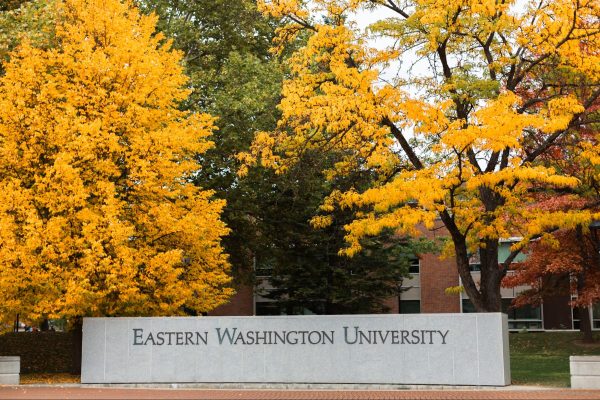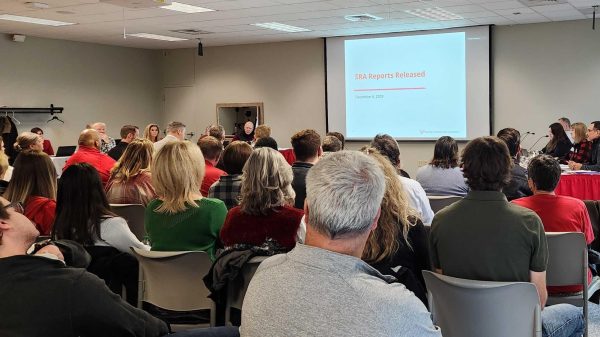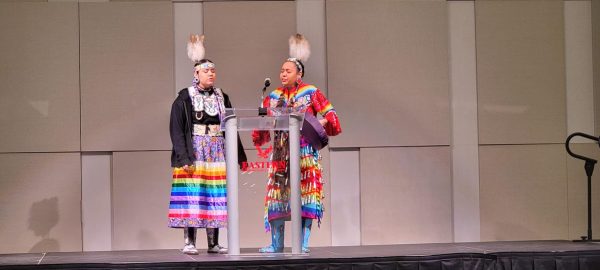Student organizations hope to incorporate more gender-neutral restrooms on campus
October 24, 2012
Transgender, third gender, intersex and some disabled students are sometimes left with no choice but to trek across campus because gender-neutral restrooms are missing from main areas of Eastern.
“They’re available to anyone to use, as well as for students who may be uncomfortable going into either of the gendered bathrooms,” said Caleb Morgan of ASEWU Diversity Outreach.
According to Morgan, many older buildings do not have any neutral restrooms at all because they were originally not built with them. The few that are available are on the periphery of campus and are not always easily located without a map.
Currently the restrooms are marked with a universal or family bathroom sign, but up until just a few years ago, some of the restrooms were not even marked with a room number, let alone a sign indicating that it was a bathroom.
“I would say [the bathrooms] are pretty inadequate right now. There’s like six I think, and they’re in places that are really hard to get to. They’re way out of everyone’s way,” said a transgender student who wished to remain anonymous.
Pride Center Coordinator Sandra Williams has been working with transgender and intersex students at EWU for more than two years. She had to search around the campus in order to make a map of all the neutral bathrooms after a student came into the center asking where they could go.
“[Using the bathroom], that’s a privilege. I don’t have to think about it. And what must that be like to need to go to the bathroom and not be able to and feel like you have to hold it? It bothered me a lot. No one should have to go through that,” said Williams.
The anonymous transgender student said that some students may even go so far as to avoid living on campus because of the lack of comfortable facilities.
“It’s possible. I could see myself doing that because it might be uncomfortable. I have third gender friends [in the dorms] who don’t have any third gender bathrooms to use,” said the anonymous transgender student, “It’s a safety issue, and feeling safe.”
Williams said that the few transgender and third gender students she knows of that live in the dorms just have to accept the options that are available.
“I would expect that you’d be really uncomfortable or you don’t live in the dorm,” said Williams. More often than not, she has seen these students choose the latter option.
“I know that that’s the case, that they live off campus. I helped a student find off-campus housing once specifically because they weren’t comfortable in the dorms,” said Williams.
Whether it is a dorm, classroom building or a cafeteria, Williams said that these students are forced to be hyper-vigilant whenever they use the restroom. They time their visits carefully and will wait just to go at a time when they are less likely to run into someone. Some also will go to restrooms that are in a remote corner of the building.
Accessible neutral restrooms would also help a population of disabled students who cannot always use normally gendered restrooms.
“There are other students and quadriplegic students who require assistance in the restroom but don’t necessarily always have a same-sex person to assist them. Both populations will definitely benefit,” said Kevin Hills, director of disability support services.
“We’re trying to make a move on the campus for universal access, making the campus accessible to everyone on all levels for all reasons,” said Hills. “I’m a huge proponent of ramps and automatic doors and things like that, and I think gender neutral restrooms fall into that same category.”

According to Morgan, the university is making an attempt at being more gender-neutral by including these bathrooms in new buildings as they are built, specifically Patterson Hall and the new dormitory.
“I know in the future we’ll be moving towards a more gender-neutral type of environment. There isn’t a bathroom in the PUB, so that’s also something I’m going to be bringing up,” said Morgan.
For Williams, the next step would be to look the campus over and possibly convert some rooms in the older buildings into neutral bathrooms.
“We’re at that place of recognizing that we need to do something, and now we’re going to begin the process of figuring out what we can do,” said Williams, “The final step would be to get a commitment from the university that whenever they build a new building they take that into account and make sure there are neutral bathrooms.”
“It says a lot to a student when you show them that you value something that is important to them. That a university has made a commitment to making sure their students are taken care of and having their basic needs met,” said Williams.






